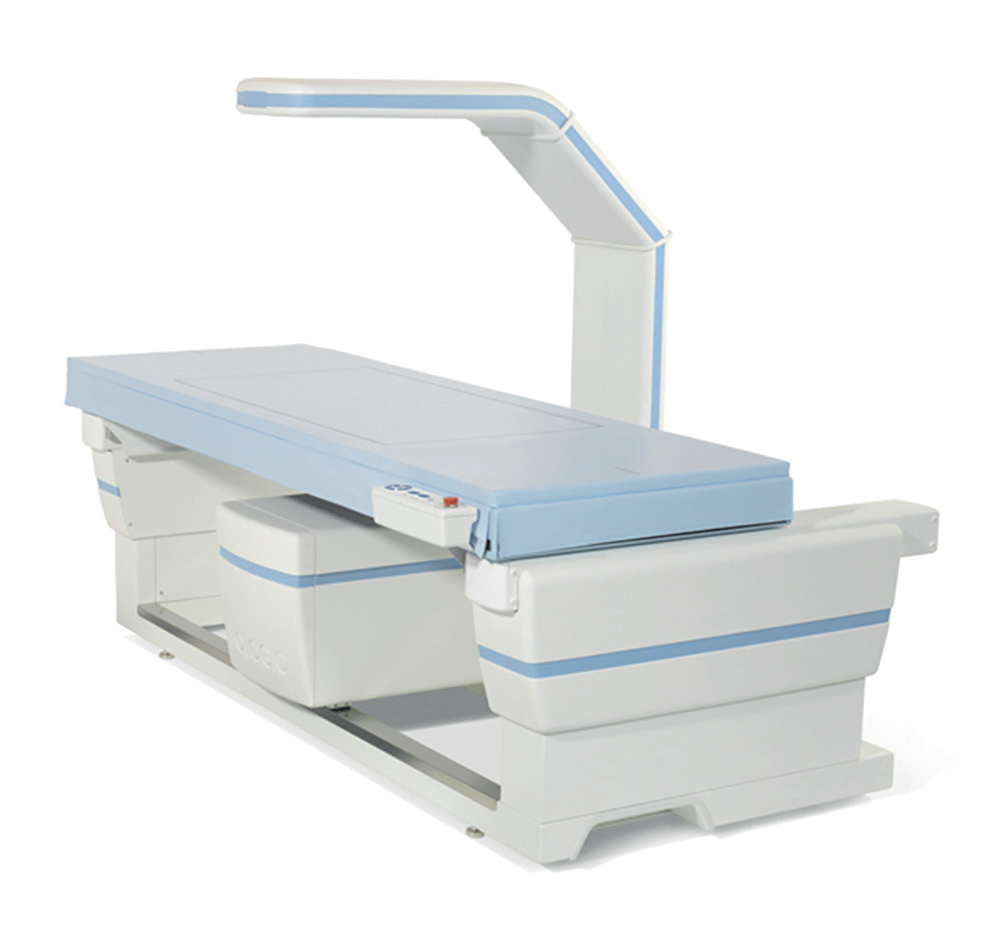
A bone density scan, also known as DEXA (dual energy absorptiometry) uses x-ray equipment and a computer to
measure bone density. The results of the scan can help to estimate your risk of fractures in different bones or monitor how well treatment for osteoporosis is working. The scan will be carried out by one of our experienced radiographers.
Do I need to be referred for a DEXA scan?
Please be advised self-referral is only available to females over 40 years of age. For anyone else you will need a referral from a clinician.
Are there any risks associated with having a DEXA scan?
As with x-rays, bone density scans use radiation. The level of radiation is extremely low, and the benefits of the scan are thought to outweigh any risks.
You should not have a DEXA scan if you are pregnant. If you are pregnant or think you could be pregnant, you must let your referring doctor or radiographer know.
Before your DEXA scan
You do not need to do anything to prepare for your scan. You may eat and drink and take any medication as normal.
When you arrive at the clinic you will be asked to sign a form to say you consent to having the scan. You won’t need to remove any jewellery, but you will be asked to get changed into a hospital gown.
During your DEXA scan
The procedure is quick and painless and takes roughly 5 minutes to complete. You will be asked to lie on your back on a flat, open X-ray table. You will need to keep very still during the scan, so that the images do not become blurred.
During the scan, a large scanning arm is moved slowly over your body and a narrow beam of low-dose x-rays will be
passed through the part of your body being examined. This will usually be your hip and lower spine. However, as bone density varies in different parts of the skeleton, your forearm or another part of your body may be scanned.
After your DEXA scan
There is no aftercare needed once the scan is complete. You will be given a printed report to take away with you. Your scan will be stored on our DEXA system and backed up securely. All patient information is protected and stored using the strictest security measures.
Your results
A DEXA scan compares your bone density with the bone density expected for a young healthy adult and a healthy adult of your own age, gender and ethnicity. The difference is calculated as a standard deviation (SD) score. This measures the difference between your bone density and the expected value in terms of the natural spread of values in the healthy population.
The difference between your measurement and that of a young healthy adult is known as a T score, and the difference between your measurement and that of someone of the same age is known as a Z score.
The World Health Organization (WHO) classifies T scores as follows:
above -1 SD is normal
between -1 and -2.5 SD is defined as mildly reduced bone mineral density (BMD) compared to peak bone mass (PBM)
at or below -2.5 SD is defined as osteoporosis
If your Z score is below -2, your bone density is lower than it should be for someone of your age. Although DEXA results provide a good indication of bone strength, they won’t necessarily predict whether you’ll get a fracture. For example, someone with low bone density may never break a bone, whereas someone with average bone density may have several fractures. This is because other factors – such as age, sex or whether you have previously had a fall – also determine if you’re likely to sustain a fracture.
The FRAX tool
The World Health Organization (WHO) has developed a 10 year Fracture Risk Assessment Tool to help predict a person’s risk of fracture in an age range between 40-90 years. The tool is based on bone mineral density (BMD) and other relevant risk factors such as age and sex. The algorithms that are used give a 10-year probability of fracture and a 10-year probability of major fracture in the spine, hip, shoulder or forearm.
Your referring doctor will discuss your printed report with you and will consider all your individual risk factors before deciding if any treatment is necessary.
About our DEXA Scanner
At Opus Diagnostics we have a Hologic Horizon DXA system, which is the latest in densitometry technology. It offers:
High-resolution ceramic digital detectors array featuring ultra fast, high output, low noise ceramic detectors that provide better bone mapping and images.
High frequency dual energy X-ray source that is smaller and lighter than previous generations.
Dynamic Calibration™ system, delivering real-time pixel-by-pixel calibration through bone and tissue equivalents for greater long-term measurement stability.
OnePass™ single-sweep scanning designed to eliminate beam overlap errors and image distortion found in rectilinear acquisition techniques that delivers superb image quality and precision
If you would like to book an appointment, please complete the form below.
